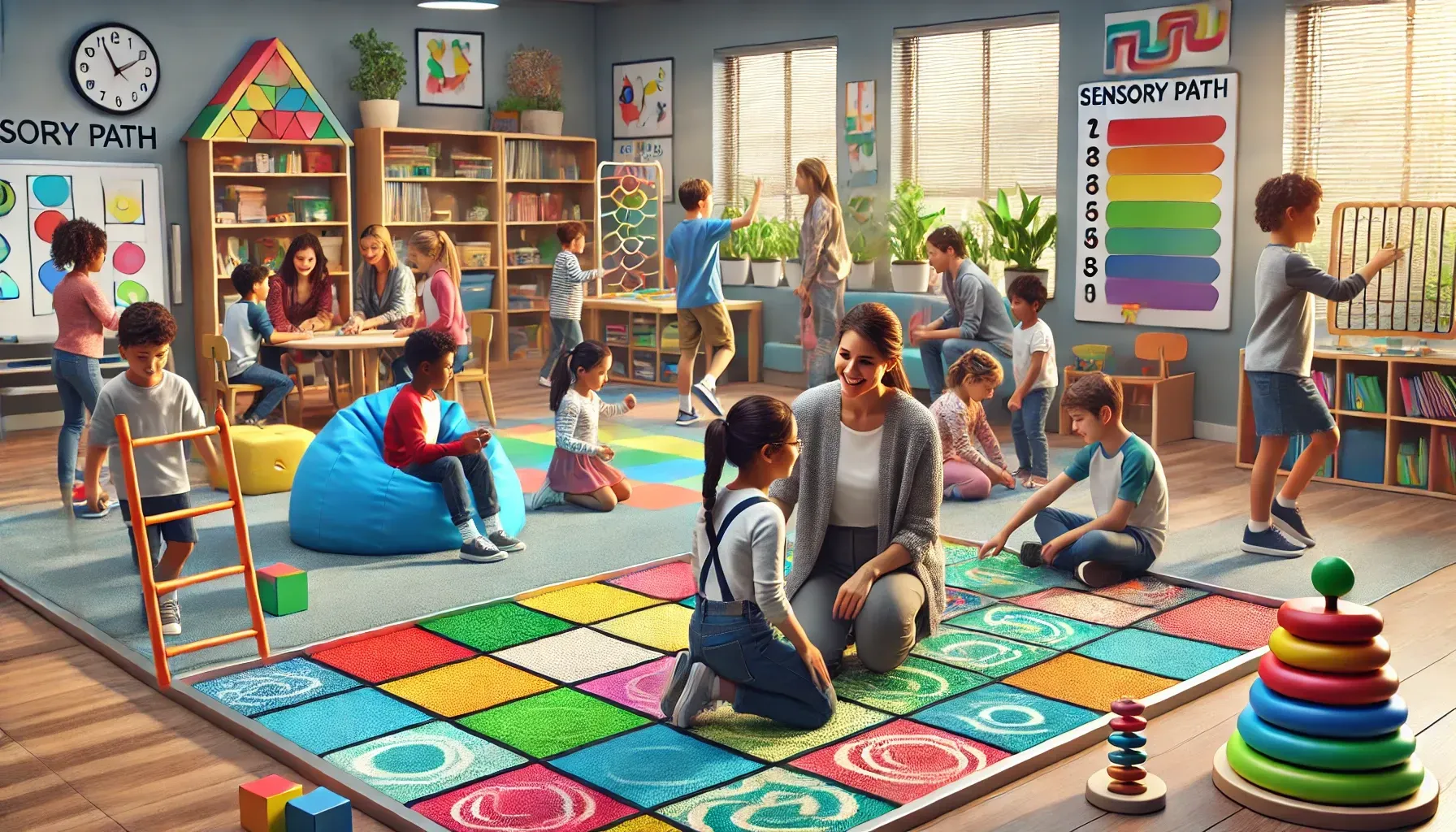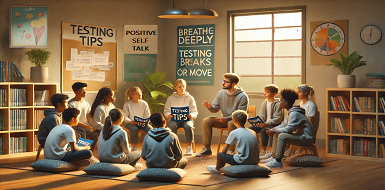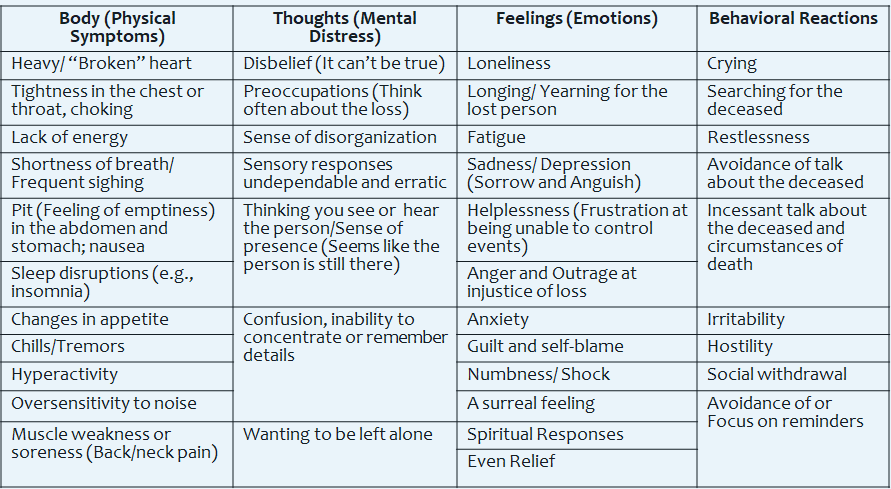Expanding the Impact of Sensory Paths in Schools
Sensory Paths to Expand Student Success

After successfully integrating sensory paths into school counseling programs, educators and administrators can explore ways to expand their impact across the broader school community. Sensory paths are more than just a tool for emotional regulation; they can be leveraged to enhance learning, foster inclusivity, and create a holistic approach to student well-being.
Integrating Sensory Paths into the School Environment
While sensory paths are traditionally used in hallways or designated spaces, their potential extends far beyond these areas. Schools can implement sensory paths in various settings to maximize their benefits:
- Classroom Adaptations – Teachers can incorporate movement-based learning using sensory path elements inside classrooms. For example, stations with hopping or balancing activities can reinforce math concepts like counting, while deep-breathing prompts can help students reset between lessons.
- Outdoor Learning Spaces—Sensory paths can be designed in playgrounds or outdoor areas. They encourage movement during recess while offering students an alternative way to regulate energy levels.
- Library and Quiet Zones – Schools can create calming versions of sensory paths in library areas, incorporating slow, controlled movements that promote relaxation before reading or studying.
- Special Education and Therapy Rooms – Occupational and physical therapists can use sensory paths as part of individualized intervention plans for students with sensory processing challenges or mobility needs.
Enhancing Learning Through Movement
Research has shown that movement supports cognitive function and retention. That is, students learn best when they're moving! Sensory paths can be designed to support academic skills in fun and engaging ways:
- Alphabet or Number Paths – Students can hop along a path to spell words, solve math equations, or reinforce phonics concepts.
- Directional and Sequencing Paths – These paths can guide students through steps in problem-solving exercises or storytelling sequences, reinforcing logical thinking.
- Science and Social Studies Integration – Paths can depict life cycles, geography concepts, or historical timelines, making abstract subjects more tangible through movement.
Promoting Inclusivity and Equity
Sensory paths are an inclusive tool that benefits all students, not just those with specific challenges. Schools can ensure paths are accessible and adaptable to meet the needs of students with varying abilities:
- Multisensory Elements – Incorporating touch panels, sound cues, or Braille instructions can make paths more engaging for students with visual impairments or sensory sensitivities.
- Adaptive Movement Options – Some students may benefit from seated or modified movements, so paths should include instructions that offer choices (e.g., "Hop or tap your feet").
- Social Interaction Areas – Design paths that encourage teamwork and social interaction, helping students develop communication and cooperation skills.
Engaging Families and the Community
To maximize the effectiveness of sensory paths, schools can involve families and the wider community in their development and use:
- Parent Workshops – Hosting informational sessions on sensory regulation and movement-based learning can help families implement similar strategies at home.
- Community Art Projects – Invite students, parents, and local artists to contribute to the design of sensory paths, fostering school pride and creativity.
- Collaborations with Local Organizations – Partnering with therapy centers, health professionals, or fitness experts can bring additional expertise in optimizing sensory paths for student success.
Evaluating Success and Making Improvements
To ensure sensory paths continue to meet the needs of students, schools should monitor their effectiveness and seek feedback from stakeholders:
- Teacher and Counselor Observations – Track student behavior and engagement levels before and after using sensory paths to assess changes in focus and emotional regulation.
- Student Feedback – Encourage students to share their experiences and suggest modifications that would make paths more enjoyable and beneficial.
- Data-Driven Adjustments – Use surveys or informal assessments to measure the impact of sensory paths on academic performance, attendance, and overall student well-being.
Final Thoughts
Expanding the use of sensory paths beyond traditional counseling applications can significantly enhance the school environment, learning experiences, and student well-being. By integrating movement-based strategies into classrooms, outdoor spaces, and special education programs, schools can create a comprehensive, inclusive approach to student success. When sensory paths become a school-wide initiative, they foster a culture of mindfulness, engagement, and community support, ensuring that every student has the tools to thrive.
I am a school counselor turned counselor educator, professor, and author helping educators and parents to build social, emotional, and academic growth in ALL kids! The school counseling blog delivers both advocacy as well as strategies to help you deliver your best school counseling program.

I'm a mother, grandmother, professor, author, and wife (I'll always be his). Until October 20, 2020, I lived with my husband, Robert (Bob) Rose, in Louisville, Ky. On that awful day of October 20,2020, my life profoundly changed, when this amazing man went on to Heaven. After Bob moved to Heaven, I embraced my love of writing as an outlet for grief. Hence, the Grief Blog is my attempt to share what I learned as a Counselor in education with what I am learning through this experience of walking this earth without him. My mission is to help those in grief move forward to see joy beyond this most painful time.










